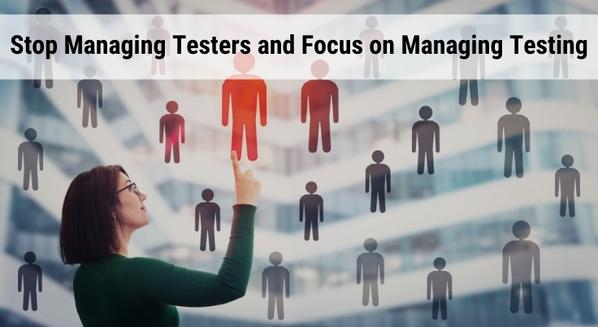Software testing has changed significantly in recent years, due to the industry's rapid evolution and technological advancements. This impacts several software testing aspects, including the position of testers within organizations and their day-to-day testing tasks. Additionally, the popularity of Agile and DevOps methodologies goes hand in hand with implementing more automation to boost efficiency and accelerate the release process. As QA managers, we must adapt to these shifts and concentrate on managing testing throughout the organization rather than strictly testers.

So What Are These Major Changes?
There are 3 changes worth noting in software quality:
1. Centralized testing teams are being dismantled, with testers becoming part of Agile teams.
2. Organizations are introducing more automation practices, but these are not necessarily being written or even led by "traditional" testers.
3. SaaS solutions contribute to releasing products faster by leveraging risk-based approaches, complimenting their pre-deployment tests with production monitoring as a way to find and troubleshoot issues more efficiently.
These developments point towards the need to modify the way "traditional" Test Managers define and focus their work, and most importantly, the range of their professional responsibilities.
Until now, “traditional” QA Managers / Directors of Testing / VPs of Quality measured themselves based on the size and reach of their teams. They focused only on the value provided by their direct reports and the performance of their projects. While these "traditional" managers could have led more comprehensive campaigns and influenced processes outside of their testing teams, the bulk of their responsibilities was based on the people who were directly under their supervision - their centralized testing teams.

A Luxury in Agile Is a Necessity in DevOps
The adoption of Agile gave us a glimpse of the benefits of working on smaller and more diverse teams. It allowed us to apply Swiss Army Knife approaches when developing our products, working with more controlled user stories, and increasing the chance of navigating the ever-changing waters of a more competitive business environment.
To be competitive in the new world, we need to be able to work faster and respond to changes in more versatile ways.To achieve this, we have to start by testing less while testing better, developing automation-based safety nets which allow us to deliver products faster. In addition to this we need to combine pre-deployment risk-based testing approaches together with in-production monitoring systems, creating a holistic Quality Assurance cycle as part of our solution.
This may be even worse if the Operations people, who will deploy, run and monitor this new feature, are not aware of what the impact should be on the product at all. Given they lack this knowledge they will not deploy an important monitor in the system, and this way the Product Management team is not able to evaluate whether the idea they brought forward, and the small project everyone worked on, is effective or if some corrections are required.
The only way the "traditional" QA Manager can cope with this change is by updating his or her approach to testing. Specifically, they need to stop managing the work of their testers, and start managing the comprehensive testing process performed by the entire development organization.
3 Helpful Tips for The “New” QA Manager
The "new" QA Manager should be in charge of shifting the quality process left, by starting the extensive efforts while user stories are being defined and reviewed. He or she should ensure there are risk analysis processes in place to:
- define which aspects of the testing are performed during the development stages
- how the automation efforts are orchestrated into the holistic testing process
- what aspects of the team’s testing can be relegated to the production phase as part of their monitoring efforts
This “new” QA Manager should not be afraid of providing feedback on the Unit Testing approach and coverage of developers. They should provide input on aspects related to deployment approaches, such as when to use feature flags, how to define the green-blue criteria, and which aspects of the deployment and rollback should be tested.
Finally, the “new” QA Manager must take a holistic approach to assessing product quality by evaluating the process and providing visibility throughout the entire product lifecycle. This involves examining various elements, such as team velocity, production environment stability, and even product NPS scores obtained from real world feedback.
Don't Stay Behind, Make the Right Adjustments
The field of Quality Management is growing at a rapid pace. Smart QA Managers will take the opportunity to grow with it. To achieve optimal results from your new software testing efforts, it is crucial to acknowledge and adopt the recent industry changes, rather than overlook them.
It’s important to adapt to these changes quickly in order to maintain your competitive edge and prioritize critical aspects of the testing process, focusing on managing the testing itself rather than individual testers. By embracing the changes in the industry, you can ensure that your testing efforts are efficient, allowing you to achieve the desired outcomes.
By integrating AI into your testing processes and staying abreast of other emerging trends, you can maintain your competitive edge and prioritize critical aspects of the testing process, focusing on managing testing itself rather than individual testers. Embracing these changes will ensure that your testing efforts are efficient, allowing you to achieve the desired outcomes.













